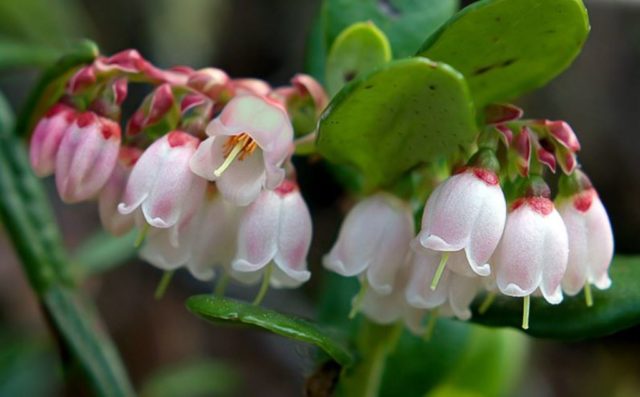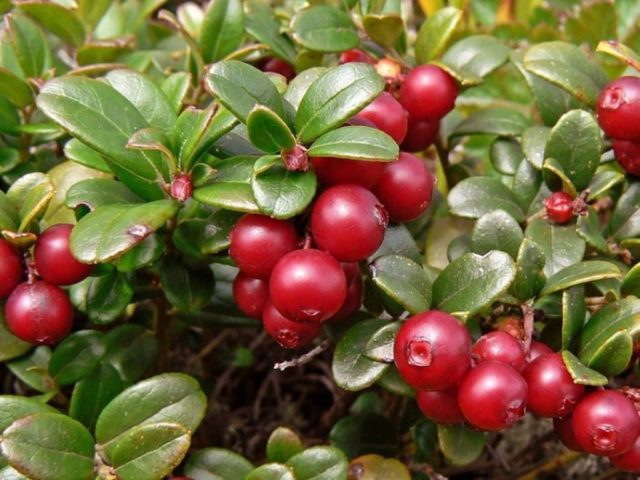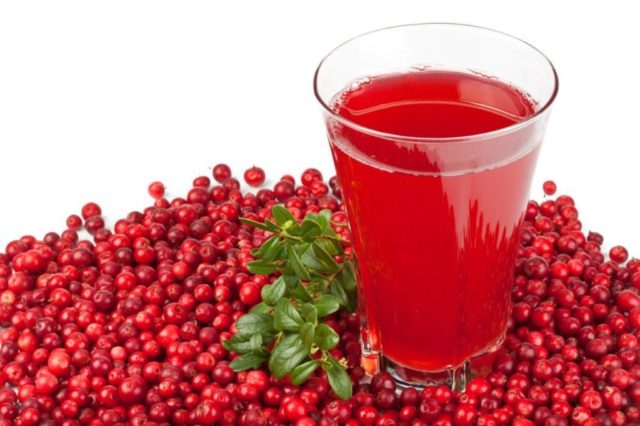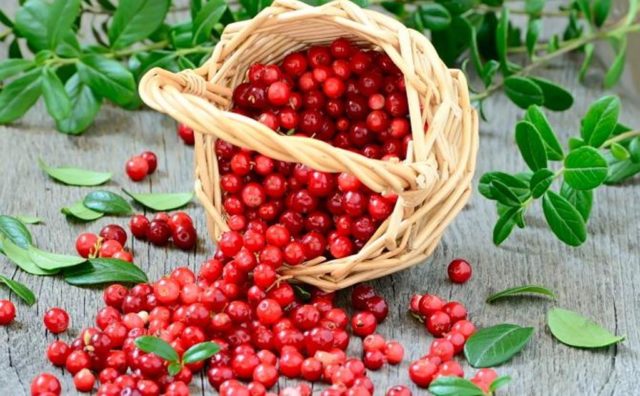Content
Lingonberry is a useful medicinal plant, which is popularly called "king-berry". Many are interested in the question whether lingonberry increases or decreases blood pressure. Due to the diverse biochemical composition, decoctions, syrups, infusions of berries and leaves save from many diseases. They normalize blood pressure, relieve headaches, fatigue, increase vitality, and improve well-being.
Useful properties and contraindications of lingonberry under pressure
Lingonberry is a natural healer that can cope with many diseases. Leaves tone up, relieve inflammation, disinfect and heal wounds, relieve fever, have choleretic and diuretic properties.
Lingonberry strengthens the heart, restores the digestive, endocrine and nervous systems.
In folk medicine, lingonberries are taken:
- in the treatment of genitourinary diseases;
- to normalize blood sugar;
- with vitamin deficiency and with weakened immunity;
- for the prevention of heart disease;
- with hypertension;
- for the treatment of gastrointestinal, viral, colds and bacterial diseases.
Infusion of berries gives and restores strength, relieves headaches, irritation and fatigue.
And also lingonberries are used as follows:
- Lingonberry water and dried berries help with gastritis and pancreatitis.
- Fresh fruits improve vision.
- Berry broth is recommended for rheumatism, diabetes mellitus, internal bleeding and vitamin deficiency.
- A decoction of dried berries stops uterine bleeding.
- Due to the rapid elimination of toxins, toxins and harmful decomposition products, lingonberry reduces weight and gives a positive result during a diet.
Lingonberry has found wide application in cosmetology. The broth is used as a rinse, as the plant restores the hair follicle, relieves dandruff and solves the problem of hair loss. Face masks are made from fresh berries. They nourish, tone and restore the skin's structure. They also prevent the appearance of age-related wrinkles and crow's feet, improve the complexion and firmness of the face, relieve inflammation and get rid of acne.
Raises or lowers lingonberry blood pressure
Lingonberries are high in polyphenols and flavanoids. Due to this, the berry improves the functioning of the heart muscle, strengthens and increases the elasticity of blood vessels and capillaries, and lowers blood pressure.
Fresh berry juice is useful in the early stages of hypertension. Since after the studies, scientists have found that if you take lingonberry broth for six months, there is a complete recovery from bouts of hypertension. Therefore, lingonberry is indispensable for high pressure.
Due to the high content of magnesium, chromium and copper in fruits and seeds, the appearance of fatty plaques is reduced, the heart rate normalizes and the risk of stroke, aneurysm, heart attack and atherosclerosis is reduced.
How to cook lingonberries from pressure
For treatment, use fresh, dried and frozen berries, a decoction and infusion of fruits and leaves.
The easiest way to relieve blood pressure is to eat fresh or frozen berries. To lower blood pressure, you need to eat 30-50 berries daily. After a few weeks, the pressure will stabilize and the state of health will improve.
There are many delicious and healthy recipes for lingonberries to lower blood pressure:
- lingonberry juice;
- baked berry tincture;
- decoction of leaves;
- lingonberry juice;
- juice with honey;
- lingonberries, mashed with sugar;
- decoction of flowers with stems;
- lingonberry tea.
Decoction of flowers
During the flowering period of lingonberry, flowers with stems are collected. 1 liter of water is poured into 200 g of the collection and boiled for about half an hour. The infusion is left to infuse overnight. In the morning, the broth is filtered and poured into a dark bottle. It is taken three times a day, 0.1 l.
Lingonberry juice
A pound of berries is ground into a mushy state. Lingonberry puree is filtered, the juice is poured into a bottle. Before taking, dilute with water in equal proportions. Consume 1 glass a day. If a pure drink is used, then 50 ml is divided into 3 doses.
Leaf decoction
60 g of dried leaves and flowers are poured with half a liter of boiling water. Leave for 60 minutes to infuse. The broth is cooled and filtered. Take 0.1 l three times a day before meals. The course of treatment is 30 days. The procedure is repeated 3-4 times a year.
Lingonberry juice
You can use both fresh and frozen berries to prepare this recipe. Grind to a puree state. 150 g of lingonberry gruel is diluted in 1 liter of water and 30 g of honey is added. Everything is stirred until the honey is completely dissolved. Fruit drinks can be consumed throughout the day, divided into equal parts.
Lingonberry, grated with sugar
1 kg of fresh berries are poured with 150 g of granulated sugar and left until the juice appears. Grind the berry with a mortar or blender. Ready jam is poured into sterile jars and put into the refrigerator for storage. And you can also store it in the freezer, but the defrosted product is not subjected to secondary freezing.
Lingonberry tea
Leaves and flowers are used for making tea, as well as fresh, dried or frozen berries. Green tea, 60 g of fruits and 30 g of dried leaves with flowers are poured into a half-liter teapot. Brew for 10-15 minutes. If desired, the tea can be enjoyed both diluted and undiluted. Since lingonberry has a diuretic property, tea is drunk no more than 3 times a day.
Roasted berry tincture
1 kg of berries are divided into equal parts. One is placed in an oven preheated to 160 degrees and simmer for at least 2 hours, then open the door or turn on the grill mode and leave for another 2 hours. To prevent the berry from burning, mix it gently. Juice is squeezed out of the second part. Then the baked berry is kneaded with a fork and combined with juice. Add honey and vodka at the rate of 30 g per 1 liter of juice. The tincture is taken twice a day before meals.
Lingonberry honey juice
2 cups of berries are washed and carefully sorted. Squeeze the juice and add 60 g of liquid honey. Stir until honey dissolves and take half a glass in the morning and evening.
How to take healing infusions correctly
Before using the healing lingonberry drink, first of all, you need to consult a therapist. In order for lingonberries to reduce pressure, it is necessary to cook them correctly and adhere to the rules of admission.
Lingonberry infusions are taken at ½ tbsp. three times a day before meals. The course of taking the medicinal infusion is a month. If desired, the course can be repeated in 3-4 months. Since the berry lowers blood pressure, it can cause drowsiness, so the healing infusion must be taken with extreme caution by drivers.
If the lingonberry drink is used incorrectly, side effects are possible:
- Allergic reaction.
- Burning in the stomach and esophagus.
- Heartburn.
- Cutting in the intestines.
- Diarrhea.
Effectiveness from lingonberry can be obtained only if the dosage is observed and there are no contraindications at all.
Limitations and contraindications for use
Although lingonberry is a storehouse of vitamins, but like any medicine, it may have contraindications to use.
The berry cannot be taken:
- hypotension;
- people with irritable stomach syndrome and high acidity of gastric juice;
- with allergic reactions;
- women during the menstrual cycle;
- patients with cholecystitis and kidney stones;
- people with chronic liver disease.
Pregnant and lactating women, as well as people whose work is associated with increased attention and concentration, should be used with caution.
Conclusion
Lingonberry raises or lowers blood pressure - this question is asked by both hypertensive and hypotensive patients. But after reading the article, everyone found the answer to their own question. Taking lingonberries, you need to follow the rules of admission and dosage. And by choosing the recipe you like the most, you can not only reduce the pressure, but also enjoy a delicious, healthy berry.














